Find Devices & Set Test Users
OneSignal Dashboard - All Users Page: Finding Users, Setting Test Users, Sorting Devices and Deleting Users.
Audience > All Users shows a list of every device in your OneSignal App, and Data Collected by the OneSignal SDK. OneSignal displays device/channel records. More details in our Users & Segments guide.
For example, when looking at records in your dashboard, the rows with:
- "Email Icon" are email channel records which can be sent email messages.
- "Chat Icon" are SMS channel records which can be sent SMS messages.
- "Apple Icon" are iOS device records which can be sent Push Notifications and In-App Messages.
- "Android Icon" are Android device records which can be sent Push Notifications and In-App Messages.
You can find a "User" and all associated device/channel records by the External User Ids and set all channel records as test users to find it easier.
You can show/hide the data attributes with the columns button (1), search by Player Id, External User Id or Email (2) and filter by Segments (3).

Test Users
Test Users are a special group of devices that you manage directly in order to test delivery of messages. To add your device as a test user:
- First find your device. There are several options listed below.
- Once you have your
player_idorexternal_user_id, you can search for it (1), then next to the device record select Options > Add to Test Users (2).
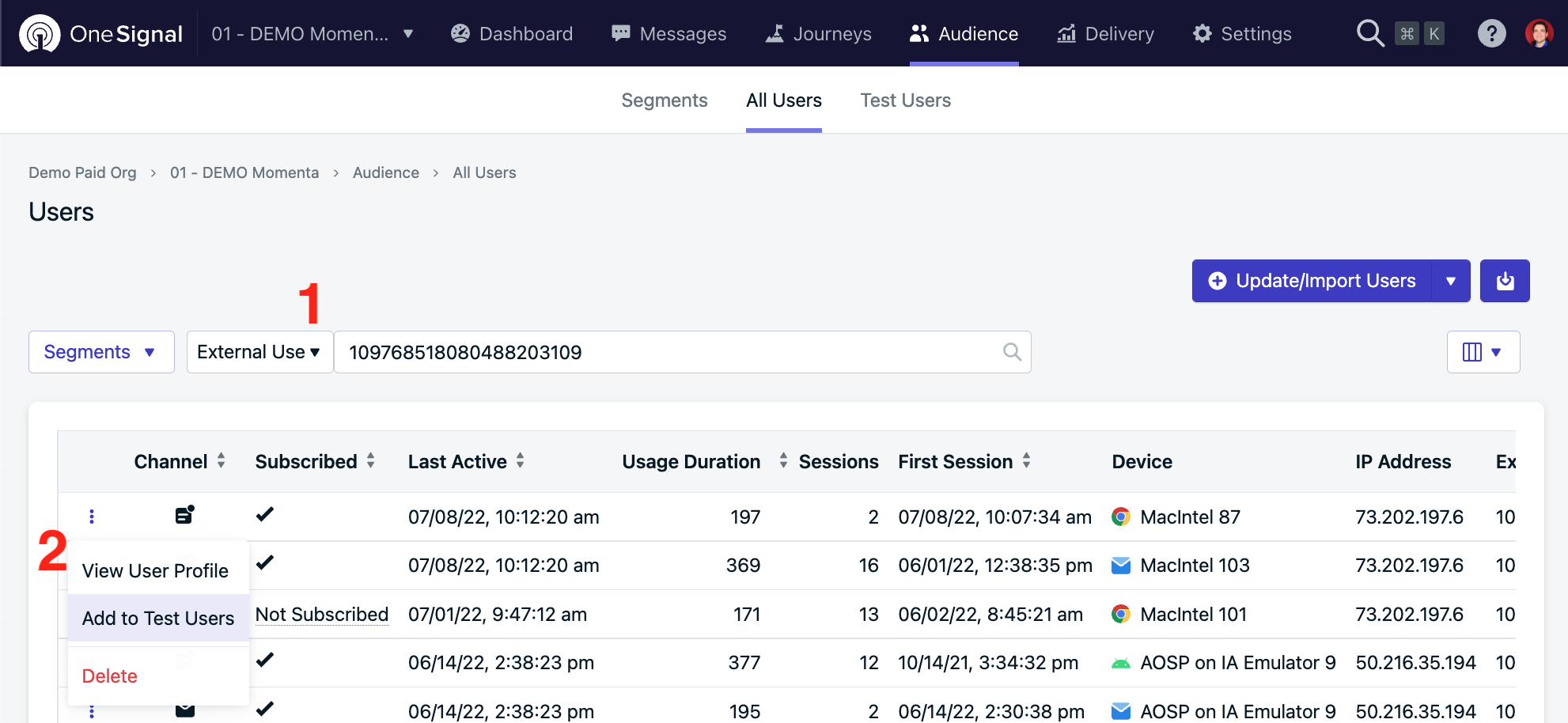
Next you can Segment devices by Test Users Filter and/or send messages using the Send To Test Device Button.
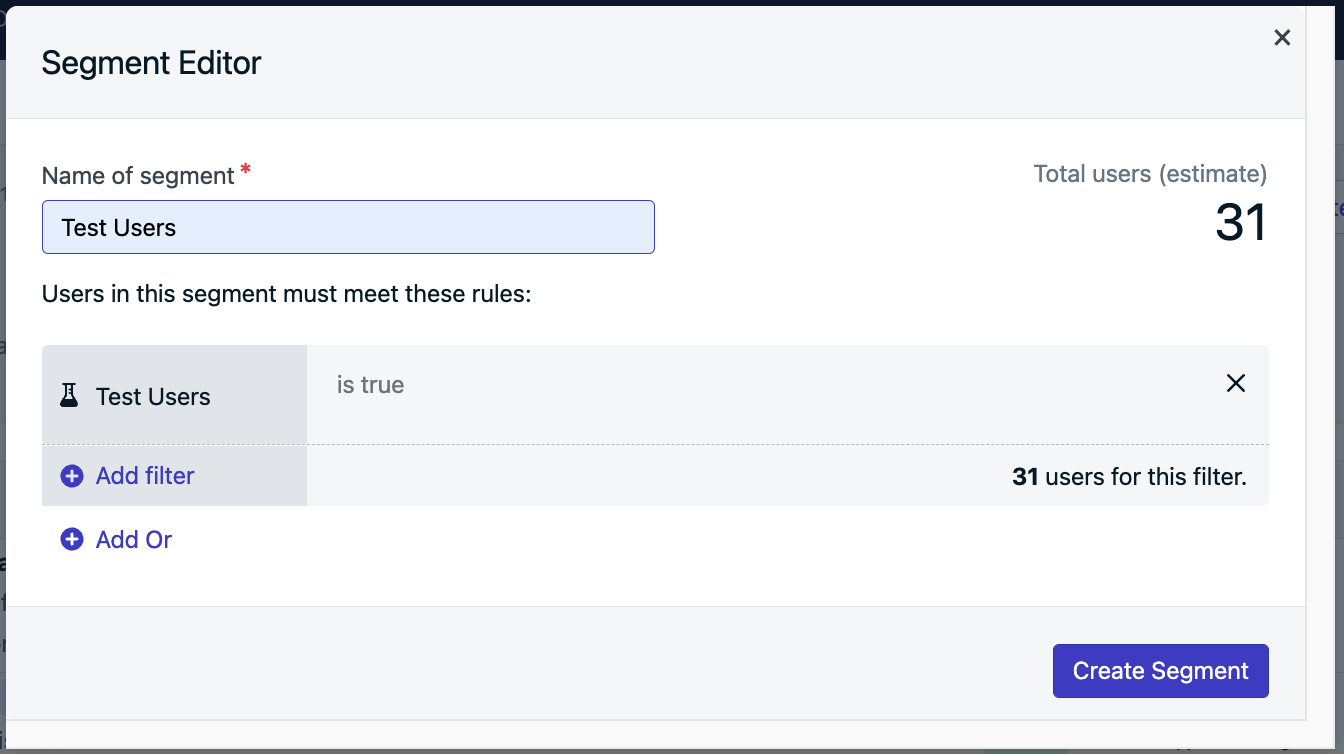
Finding Users
There are a couple options for finding your device depending on the data you currently have.
If you know the device's player_id or external_user_id , jump to Adding as Test User. If you know specific tags see the below section on finding device by tag.
Find your device for Web Desktop
- Using the same browser profile you are subscribed to your site, open the site URL with the OneSignal code active.
- Open the Debugger console (F12 or Right Click the site > Inspect).
- Click the "Console" section
- Add this code:
await OneSignal.getUserId(); - You will see your OneSignal Player Id logged to the console if you have a device record.
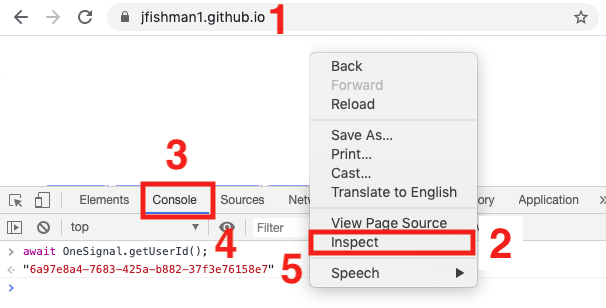
You found your Player Id on Web!
Copy the Player Id without quotes and see above to add it as a Test User.
Find your device for Web Mobile
- Plug your Android device subscribed to the site into your computer and visit your site on the Android device.
- On your desktop, open chrome to this url:
chrome://inspect/#devices
Your mobile device should prompt you to enable USB Debugging - Select the inspect button
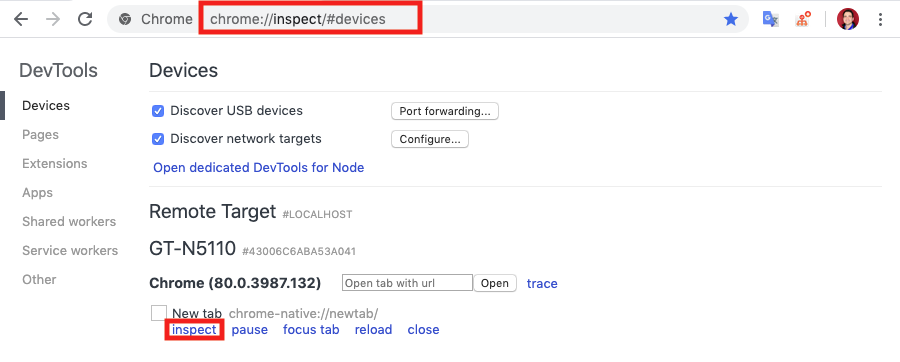
- A new window on desktop should open to your site seen on the mobile device.
- Make sure the site URL is correct with the OneSignal code active.
- Click the "Console" section
- Add this code:
await OneSignal.getUserId(); - You will see your OneSignal player ID logged to the console if you have a device record.
Copy the Player Id without quotes and see Adding as Test User.
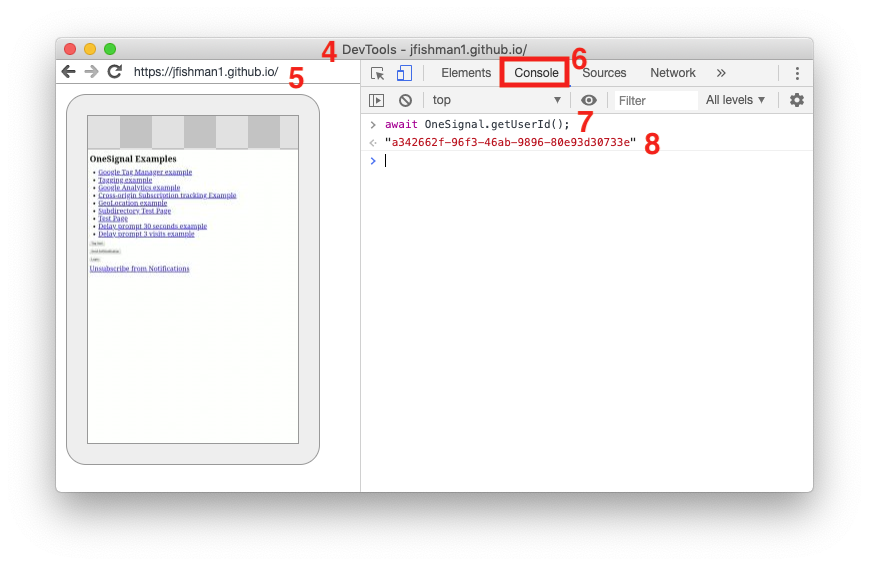
You found your player id on Web Mobile!
Copy the Player Id without quotes and see above to add it as a Test User.
Find your device for Mobile App
Using the OneSignal SDK User Data Methods, plugin your device to Xcode or Android Studio and log the player id of your device in the console.
Then copy the Player Id without quotes and see above to add it as a Test User.
Find Device by Tag
If you added a specific tag to the user like a user_name, email tag, or other identifier, you can create a Segment with the User Tag filter to find your specific device.

Find Device in Dashboard
Open your app or site with your subscribed device. Make sure you are visiting a page of your site/app with OneSignal initialized (code actively running). Then in All Users sort by "Last Active" so the arrow points up to see the latest active devices.
You may need to confirm it is your device by making some data visible. Click the Displayed Columns List filter at the top-right. Some helpful data to check is:
| Column | Details |
|---|---|
| Last Active | The most recent time the user visited the site/app. You may want to refresh the page to get updated values. |
| First Session | The first time you subscribed to the website or opened the app with OneSignal code. Check if this is the first time you subscribed to the site/app. |
| IP Address | If enabled, visit https://whatismyipaddress.com/ to see if the IPs match. More details in Data Collected by the OneSignal SDK |
| Tags, Country, External User Id | This is additional information that can be used to check if you know this data. |
| Device | - Mobile Website subscribers will show "Linux Arm..." with the Browser icon and Browser version. - Desktop Website subscribers will show Mac or Win with Browser icon and Browser version. - Android Mobile Apps - will have the device model and corresponding icons. - iOS Mobile Apps - the model is based on the Hardware String. For example "iPhone9,3 (12.3.1)" means "iPhone 7 with operating system version 12.3.1". |
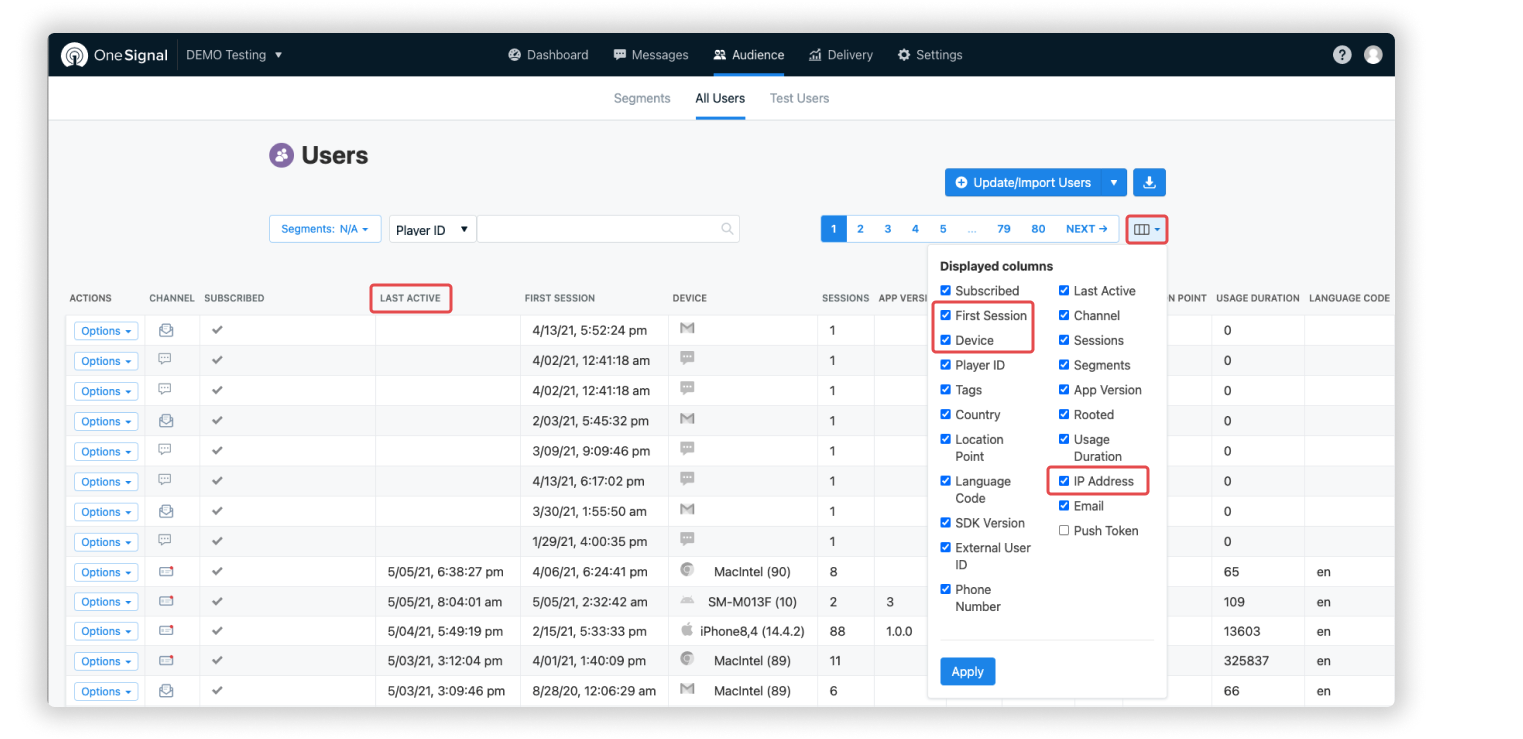
You found your device!
If you found your device, jump to Adding as Test User.
All Users Data Columns
The provided columns contain a variety of data attributes about your users, as follows:
| Column | Description |
|---|---|
| Actions | Allows you to Add to Test Users or Delete the current user |
| Channel | Push or Email Record |
| Subscribed | Whether the user's device is currently subscribed to push or email. |
| Last Active | The last date & time the user most recently used the app / visited the website. For Web Push: This value is updated anytime a user visits any OneSignal-enabled page of your site in a new tab or new window. Clicking links in the same page or refreshing the same page does not cause the value to be updated for performance reasons. If a user clicks a notification and the notification brings them back to a OneSignal-enabled page of your site in a new tab, the Last Active time will be updated. |
| First Session | The first date/time the user's device communicated with OneSignal servers. |
| Device | Platform and specific model of the user's device, including operating system version or browser version. |
| Sessions | Number of unique times the user's device has communicated with OneSignal servers. |
| App Version | Xcode build number or Android Studio versionCode in your App build.gradle |
| Country | Country based on IP Address the user's device was in the last time it communicated with OneSignal servers. |
| IP Address | By default this is not collected for EU Users. More details in Handling Personal Data. |
| SDK Version | OneSignal SDK Version based on the Native SDK Platform |
| Rooted | Android - whether the device is rooted. |
| Location Point | Mobile Only - Geolocation (lat, long) of the user's device, sent if the user has granted location permissions to your app. Must be turned on to be tracked More details in Handling Personal Data. |
| Usage Duration | Mobile Only - Number of seconds the user's device has had your app open. |
| Language Code | The language set in the device or browser settings. |
| Player ID | The unique identifier of the user's device. More info on the OneSignal Player ID |
| External User ID | Your unique user id. See Internal Database, DMP, & CRM. |
| Segments | Segments the user's device belongs to. |
| Tags | The JSON output of any tags your app has added to the user. More details in Add Data Tags. |
| Email Records Only - The email address of the device. More in Email Overview. | |
| Push Token | The identifier of the device that facilitates push notifications. Must be available to receive push. |
Updated about 2 years ago
